

| News from the Oscar Dyson |
| June 2, 2011 |
| The Oscar Dyson has set sail from Dutch Harbor for cruise 2DY11. As with all good days in the Aleutians, the weather changed from cloudy and rainy to sunny and windy within an hour of our departure. Cruise preparations included making a test of the trawl winches and conducting the ship's fire and safety drills. One picture shows Ens. Dave Rodziewicz explaining the finer points of launching the life rafts to the scientists who have just joined the ship. We are now transiting through Unimak Pass to our first sampling stations. |
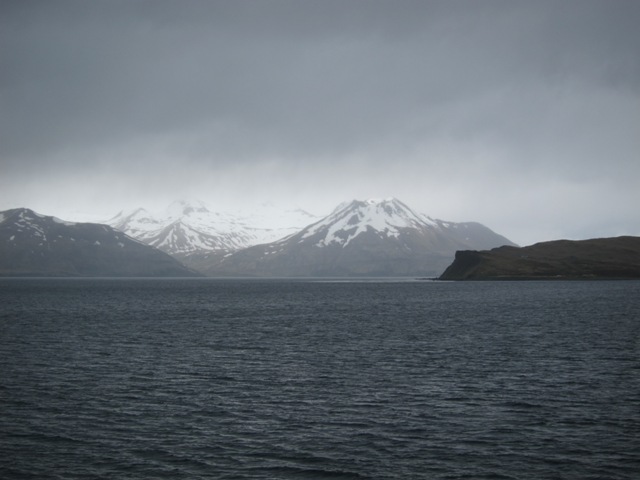 | 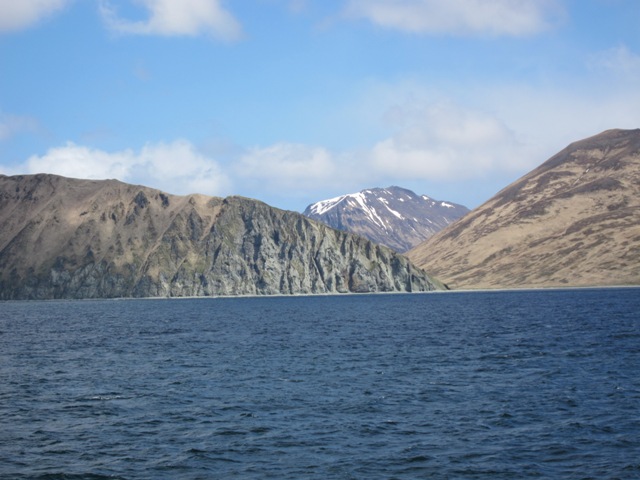 |
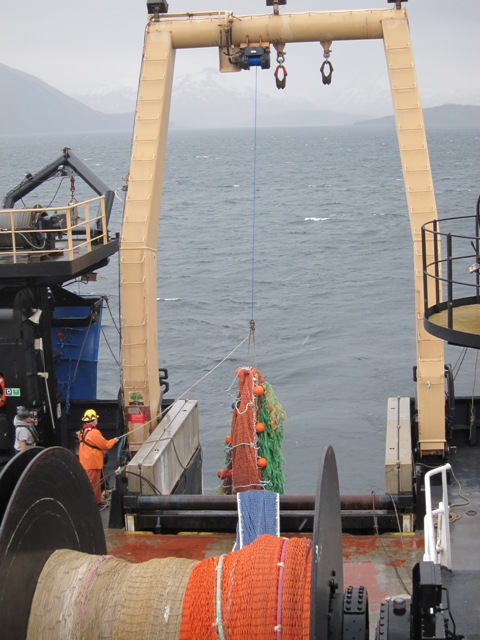
|
| The view leaving Dutch Harbor | View near Dutch Harbor, Alaska | Setting up nets for a test trawl |
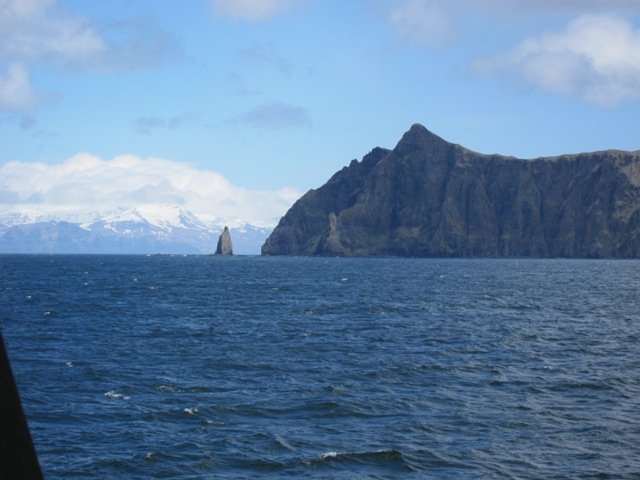 |
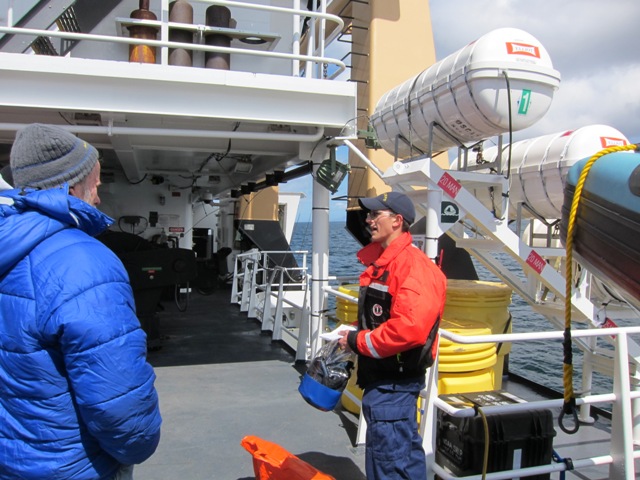 |
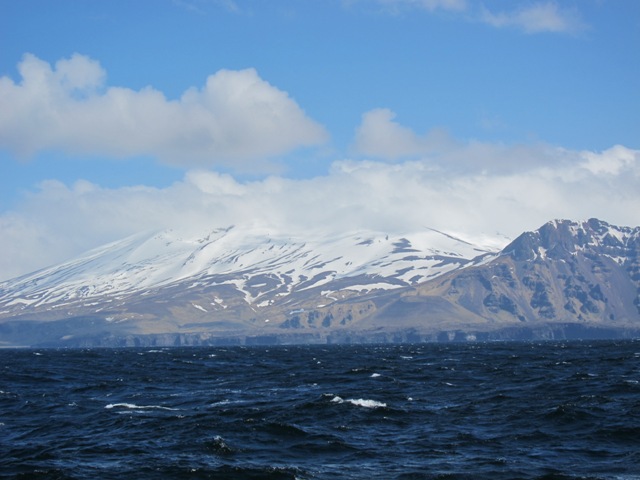 |
| Priest Rock from the Dyson | Dyson safety instructor | Heading toward Unimak Pass |
| June 3, 2011 |
| We are waiting out a nasty storm in Castle Bay right now. The galley served king crab yesterday. We had soneone pretty quickly have an allergic reaction. They got him on Benedril and he seems ok this morning, so all is well. What stations we have been able to do had some nice numbers of pollock. Obviously, they are bigger than we are use to seeing. Cuts down on eye strain I guess. [Janet Duffy-Anderson] |
| June 6, 2011 |
| We've been out pounding the grid to make up for the nasty storm that had us hiding in Castle Bay for almost 24 hours. We managed 20 out of 30 Neustons (may be more since I don't have the list in front of me right now) for GOA-IERP that Miriam wanted. We lost a few of the deepest stations that were over the shelf slope since they were the hardest to get back out to. We have been seeing pollock larvae at just about every station so far. The higher numbers are tending more toward inshore instead of the middle of the grid as in previous years. I would say that we are about 3/4 of the way through the grid in spite of the weather delay. The larvae are about 7-13 mm in length with a few 5mm ones showing up to test out eye sight. Found a few larvae that I'm not sure what the heck they are, so Morgan will have some fun looking at them when the fish get shipped home. Hopefully, we will be starting Line 8 operations Tuesday evening some time. |
| EcoFOCI Project Office NOAA/PMEL and NOAA/AFSC |
|
| 7600 Sand Point Way NE Seattle, Washington 98115 Comments and information |
|